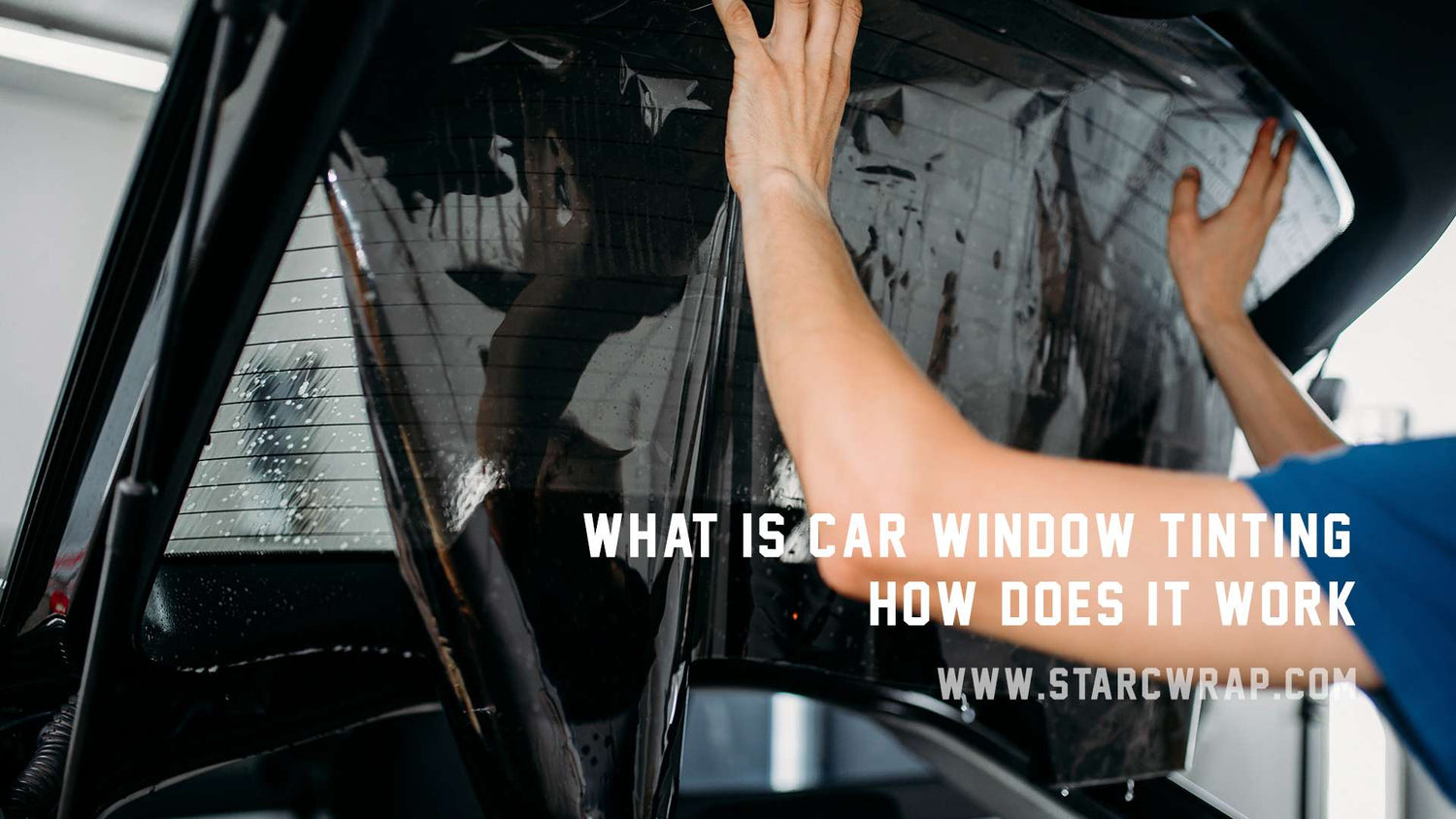
What Is Car Window Tinting & How Does It Work?
Car window tinting is a popular automotive modification that involves applying a thin, transparent film to a vehicle’s windows. This film reduces glare, blocks harmful UV rays, enhances privacy, and improves the car’s overall aesthetics. But how exactly does it work, and what are the benefits? Let’s explore the details.

How Does Car Window Tinting Work?
Window tinting films are made from layers of polyester or other materials coated with dyes, metals, or ceramic particles. These layers determine the tint’s darkness, heat rejection, and UV protection. Here’s how the process works:
- Film Application – The tint film is carefully cut to fit each window. The installer cleans the glass thoroughly before applying the film to ensure a smooth, bubble-free finish.
- Adhesive Activation – Most window tints use a pressure-sensitive adhesive that bonds to the glass when heat and pressure are applied.
- Curing Process – After installation, the tint needs time to dry and adhere properly. During this period, drivers are usually advised to keep windows rolled up for a few days.
Types of Window Tint Films
Not all window tints are the same. Here are the most common types:
- Dyed Film – The most affordable option, dyed film uses layers of dye to block sunlight and reduce glare. However, it offers minimal heat rejection and may fade over time.
- Metalized Film – Contains tiny metallic particles that reflect heat and UV rays. It’s more durable but can interfere with electronic signals (e.g., GPS, radio).
- Carbon Film – Provides excellent heat rejection without fading and doesn’t interfere with electronics. It also gives a sleek, matte finish.
- Ceramic Film – The highest-quality option, ceramic tint blocks up to 99% of UV rays and reduces heat effectively without affecting visibility or electronics.
Benefits of Car Window Tinting
- UV Protection – Blocks up to 99% of harmful UV rays, protecting your skin and preventing interior fading.
- Heat Reduction – Keeps your car cooler by rejecting solar heat, reducing AC workload.
- Glare Reduction – Improves visibility by minimizing sun glare, especially during dawn and dusk.
- Privacy & Security – Darker tints make it harder for outsiders to see inside, deterring theft.
- Enhanced Aesthetics – Gives your car a sleek, stylish look.
- Safety – In case of an accident, the film can help hold shattered glass together.
Legal Considerations
Window tinting laws vary by location, regulating how dark or reflective tints can be. Always check local regulations before tinting to avoid fines or removal orders.
Conclusion
Car window tinting is a practical upgrade that offers protection, comfort, and style. Whether you choose dyed, metalized, carbon, or ceramic film, the right tint can enhance your driving experience while keeping you and your passengers safe.

